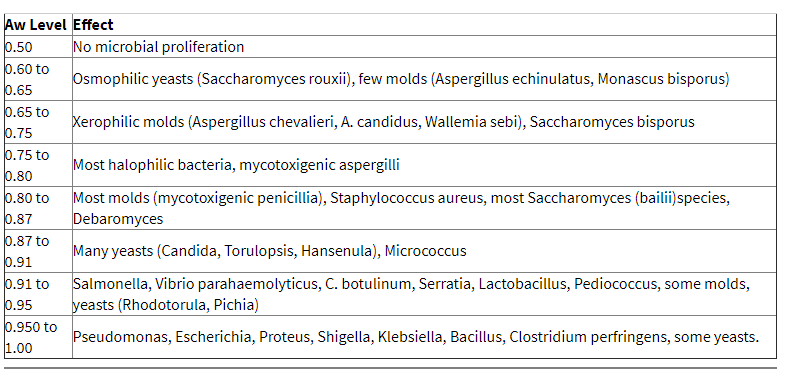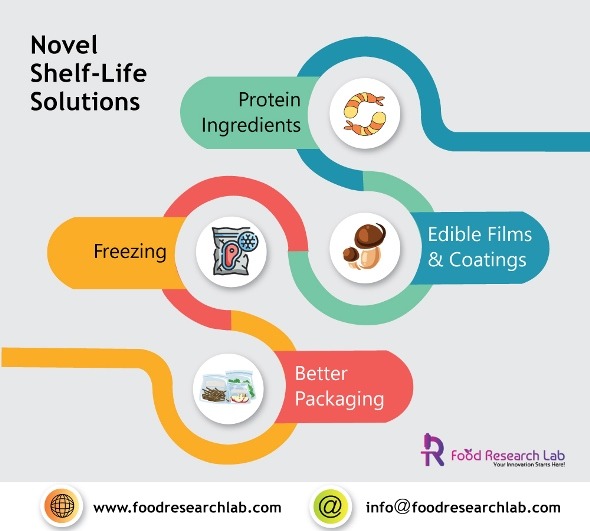Extending the shelf-life of Baked product development relies on the manufacturers, product developers, process and packaging technologists to produce attractive and delicious products that stay fresh for a long time without any microorganisms. Shelf-life of baked goods depends on a complex set of conditions. Understanding how each of these factors is involved in the physical and chemical translation will aid in determining the loss of shelf-life with time during New Food product development. Having said that, certain chemical reactions and physical changes are unavoidable, but a few methods could be employed to delay them and obtain a high-quality product life.
Extension of Baked Food’s Shelf Life
Introduction
Extending the shelf-life of Baked product development relies on the manufacturers, product developers, process and packaging technologists to produce attractive and delicious products that stay fresh for a long time without any microorganisms. Shelf-life of baked goods depends on a complex set of conditions. Understanding how each of these factors is involved in the physical and chemical translation will aid in determining the loss of shelf-life with time during New Food product development. Having said that, certain chemical reactions and physical changes are unavoidable, but a few methods could be employed to delay them and obtain a high-quality product life.
Staling
At ambient temperatures, most baked goods such as bread and rolls become moist and spongy, undergoing deterioration in quality, which is commonly known as staling. Generally, the higher the moisture content found in the fresh product will increase the changes resulting from staling. For instance, bread, sweet goods and cakes stale faster than do cookies and crackers due to their higher moisture content. If we look closely at bread, the crumb and the crust are undergoing staling at different rates due to the same reason. Crumb staling is evident from many physiochemical changes such as changes in taste, aroma, hardness and starch crystallization and retrogradation, leading to insoluble starch content. To address these problems of staling, packaging solutions can be deployed to prevent moisture loss and to keep the crumb soft and flavourful. Staling can be slowed by handling the storing and shipping temperatures below 32 ℃ during a bakery product development.
Emulsifier
Emulsifiers slow down the staling process by enhancing moisture retention. Surfactants provide many functions in shelf-life improvements, such as increasing the bread loaf volume and obtaining an optimal and functional gluten structure. This process leads to a softer crumb with improved crumb resilience and moisture retention. (1)
Gluten proteins hinder the protein molecules interaction due to ionic repulsion. Salt increases the dough strength by suppressing the ionic repulsion. Fatty acid present in surfactants (DATEM, SMG) bind to the hydrophobic areas of gluten proteins. Saturated fatty acids of monoglycerides are better than unsaturated versions in obtaining the desired outcome, such as better air incorporation. Using oil in cake mixes produce a tender cake with enhances shelf-life. However, this affects the foaming ability. Incorporation of emulsifiers such as acetylated or lactylated monoglycerides will improve the oil’s functionality in cakes.
Catalysts or enzymes
Enzymes can be classified based on the reactions, substrates, end products, thermal stability, and source. In baking, amylases (starch-degrading enzymes) are often used to break down gelatinizing starches during baking. Heat stability and their mode of action are the main parameters for their performance and heavy usage. This is crucial as the amylases need to modify the gelatinization of starch during baking at temperatures above 150 ℃, improving crumb softness. Commonly used amylases are obtained from Aspergillus oryzae; glucoamylase, Aspergillus niger; malted wheat/barley; Bacillus subtilis; Bacillus megaterium; and Bacillus stearothermophilus. (2)
.
Hydrocolloids
Hydrocolloids are used to improve water solubility, increase viscosity and ability to form gels. Hydrocolloids also improve and stabilize the texture and inhibit the ice crystallization with stable emulsions. Gums are high-molecular-weight polysaccharides with fiber and proteins. Commonly used gums in baked products are agar, carrageenan, cellulose gum, methylcellulose, alginates, guar, locust bean gum, xanthan gum, and psyllium husk. In products such as icings and meringues, gums bind water to prevent syneresis and provide freeze/thaw stability with a gloss. (3)
Water activity (Aw)
Aw is defined as a measure of the available moisture in a food system. Aw should not be confused with the total amount of water present in the food. Humectants can be used to control microbial and chemical activities to relative vapour pressure. Water binds to sugars, starches, and salt with hydrophilic binding sites. Sugars and sugar alcohols, such as mannitol, maltose, sucrose, sorbitol and fructose are the commonly used effective humectants. Honey is a multifunctional humectant that helps in improving the stability of frozen dough products. Honey has also found to enhance flavour qualities with antioxidant properties.

Reduction of microbial load
Good health and safety standards in plants can prevent contamination problems. Apart from controlling Aw, manufacturers can add ingredients to aid in controlling microorganisms. Natural inhibitors such as vinegar and raisin juice concentrate reduce pH to inhibit microbial growth. Food additives such as sorbate and propionate are effective against yeasts, mould and bacterial growth.
Novel Shelf-Life Solutions
Protein Ingredients from soy, whey, and milk provide improvements in the shelf-life stability of foods due to their water-binding capacity. During the baking process, proteins unfold, exposing additional water-binding sites unavailable in the native protein form. Therefore when these ingredients are incorporated into bakery filling formulations, water will be tightly bound to the protein resulting in a moist end product with reduced starch retrogradation. Sometimes, the management of moisture content can lead to flavour changes. It is advisable to use oil-based flavours that bake-off less easily and at a lower temperature for a longer time.

Edible Films and Coatings have been developed in response to consumer demands for foods with high quality and long shelf-life. For environmental reasons, there is a necessity for reducing disposable packaging and improving recycling options. Edible films improve the mechanical properties in food and control the loss of volatile flavours. Edible mass transfer barriers have proven to be effective with protein, lipids and polysaccharides.
Freezing has been proven to preserve food and naturally extend the shelf-life. Freezing will lower the negative impact of staling on taste, texture. If the baked goods are spoiling sooner than consumed, then consider freezing your products in an air-tight container.
Better Packaging
Baked goods with shelf-life between two weeks and six months are achieved largely based on packaging technology. High-quality barrier films are widely available at a reasonable cost. A few of the latest technology includes adding gases to control the atmosphere (Modified-atmosphere packaging (MAP)), have added weeks of shelf-life from a shelf-life study. However, faulty seals, package integrity and the residual oxygen in the pack may result in less safe baked goods. Even upon appropriate sealing, the risk of anaerobic bacterial growth is present. Manufacturers should be conscious of Aw and pH conditions to avoid such microbial growth.

Let’s create something Innovative and Delicious together
Food Research Lab strives for excellence in new Food, Beverage and Nutraceutical Product Research and Development by offering cutting edge scientific analysis and expertise.




